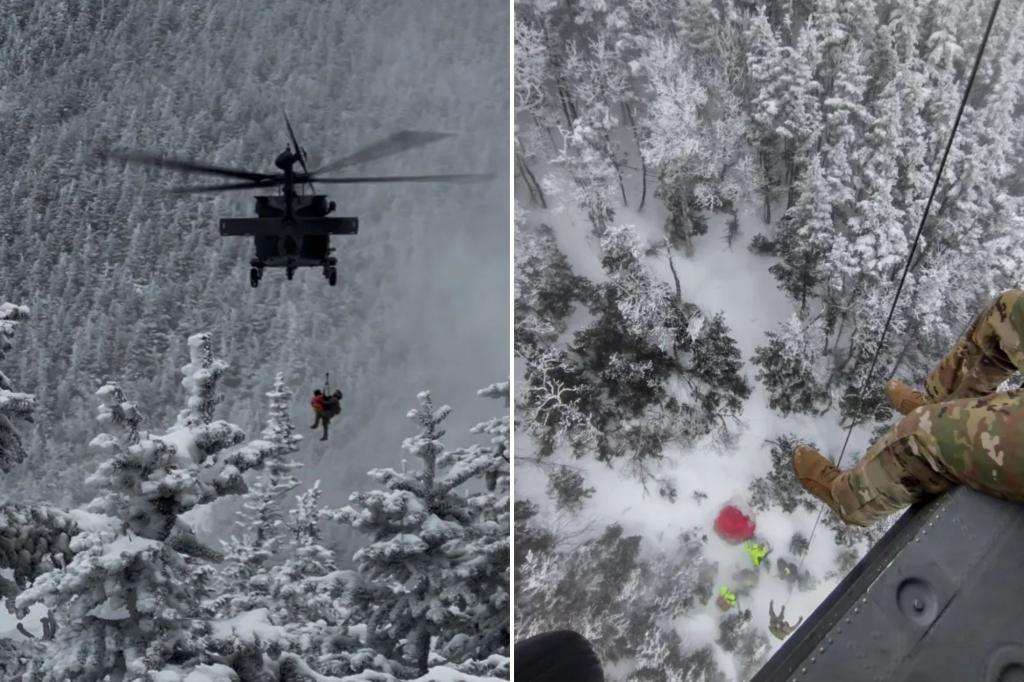Paragraph 1: The Ill-Fated Hike and Descent
Patrick Bittman, a 28-year-old from Portland, Maine, embarked on a solo night hike in New Hampshire’s White Mountains, aiming to witness the sunrise from the summit of Mount Lafayette. His journey began on Wednesday night, a seemingly ambitious but achievable goal for an experienced hiker. However, unforeseen challenges awaited him near the summit of Little Haystack Mountain, a peak along the Franconia Ridge, renowned for its challenging weather conditions. As Bittman neared his destination, he encountered deep, wind-blown snow, creating treacherous conditions that forced him to abandon his summit attempt and descend the mountain. This seemingly simple decision marked the beginning of a harrowing ordeal.
Paragraph 2: Lost in the Frigid Wilderness
During his descent, Bittman lost his bearings in the challenging terrain and veered off course, unknowingly entering the Dry Brook drainage. This area, characterized by its rugged topography and dense vegetation, posed significant navigational difficulties. As darkness enveloped the mountains, Bittman found himself trapped in an increasingly precarious situation. The temperature plummeted to a bone-chilling 20 degrees Fahrenheit, with wind chills nearing zero, intensifying the dangers of his predicament. He spent a terrifying night alone in the wilderness, exposed to the elements and battling the growing threat of hypothermia.
Paragraph 3: The Desperate Plea for Help
As dawn broke on Thursday morning, Bittman’s situation had become critical. His limbs were frozen, his body temperature dangerously low, and he was unable to move through the deep snowdrifts that now encased him. Recognizing the gravity of his situation, he made a desperate call to 911. His plea for help triggered a complex and challenging rescue operation, involving multiple agencies working against the clock to save his life. His call painted a stark picture of his dire circumstances, highlighting the urgency of the situation.
Paragraph 4: A Challenging Rescue Operation
The rescue operation commenced immediately, involving ground crews from the New Hampshire Fish and Game Department and the Pemi Valley Search and Rescue Team. Their efforts were hampered by the prevailing weather conditions, which included poor visibility due to cloud cover and intermittent snow squalls. The steep terrain and dense vegetation further complicated their efforts, demanding a carefully planned approach. Simultaneously, an aerial crew from the Army National Guard was mobilized, ready to assist when weather conditions permitted. The ground teams faced a grueling trek, battling through thick underbrush and navigating the treacherous slopes to locate the stranded hiker.
Paragraph 5: Reaching the Hypothermic Hiker
After an arduous hour of bushwhacking through 1,000 feet of dense vegetation off the established trail, the first ground rescuers finally reached Bittman in the early afternoon. They found him in a state of severe hypothermia, his body struggling to maintain its core temperature. The rescuers immediately began administering first aid, placing him in an emergency sleeping bag to provide insulation and shelter from the elements. They also provided him with warm, dry clothing and warm fluids to help combat the effects of hypothermia and begin the process of rewarming.
Paragraph 6: Aerial Evacuation and Interagency Cooperation
Two hours later, a break in the weather allowed the Army National Guard helicopter to reach Bittman’s location. A medic was lowered to assess his condition and prepare him for evacuation. Bittman was then hoisted into the helicopter and transported to a local hospital for further treatment. The successful rescue operation highlighted the importance of interagency cooperation in search and rescue missions, particularly in challenging environments. The New Hampshire Fish and Game Department praised the collaborative efforts of all involved, emphasizing the critical role of the aerial evacuation in saving valuable time and ensuring Bittman’s timely access to medical care. This collaborative effort, combining ground and aerial resources, proved to be instrumental in saving Bittman’s life.

